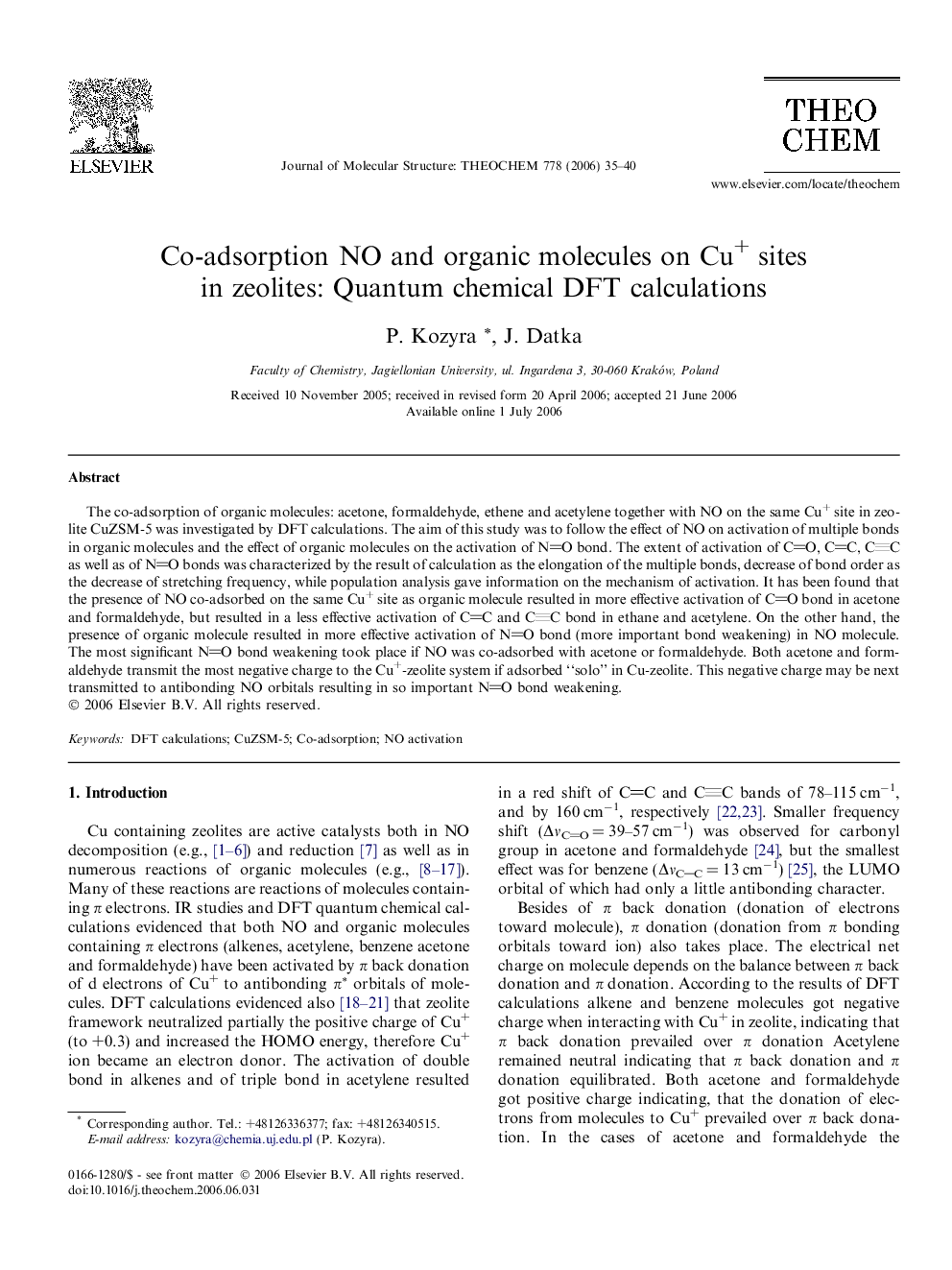| Article ID | Journal | Published Year | Pages | File Type |
|---|---|---|---|---|
| 5418993 | Journal of Molecular Structure: THEOCHEM | 2006 | 6 Pages |
Abstract
The co-adsorption of organic molecules: acetone, formaldehyde, ethene and acetylene together with NO on the same Cu+ site in zeolite CuZSM-5 was investigated by DFT calculations. The aim of this study was to follow the effect of NO on activation of multiple bonds in organic molecules and the effect of organic molecules on the activation of NO bond. The extent of activation of CO, CC, CC as well as of NO bonds was characterized by the result of calculation as the elongation of the multiple bonds, decrease of bond order as the decrease of stretching frequency, while population analysis gave information on the mechanism of activation. It has been found that the presence of NO co-adsorbed on the same Cu+ site as organic molecule resulted in more effective activation of CO bond in acetone and formaldehyde, but resulted in a less effective activation of CC and CC bond in ethane and acetylene. On the other hand, the presence of organic molecule resulted in more effective activation of NO bond (more important bond weakening) in NO molecule. The most significant NO bond weakening took place if NO was co-adsorbed with acetone or formaldehyde. Both acetone and formaldehyde transmit the most negative charge to the Cu+-zeolite system if adsorbed “solo” in Cu-zeolite. This negative charge may be next transmitted to antibonding NO orbitals resulting in so important NO bond weakening.
Related Topics
Physical Sciences and Engineering
Chemistry
Physical and Theoretical Chemistry
Authors
P. Kozyra, J. Datka,
